Everything you need to know about pears
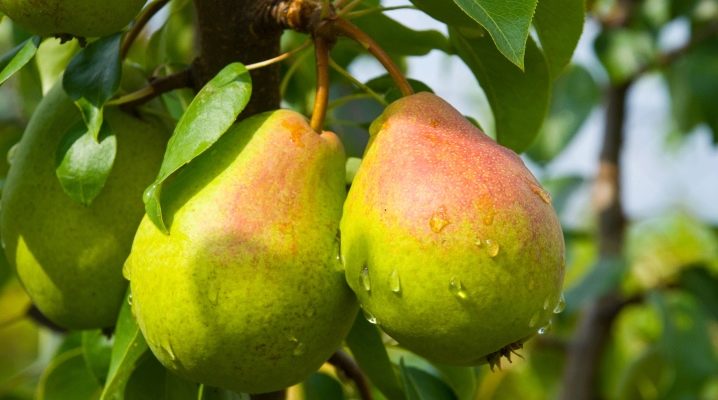
A pear orchard is both a decoration of the site, and wonderful fruits, but this is all subject to proper care. Therefore, when choosing such a fruit tree seedling and planting it, you need to consider everything there is to know about pears.

What it is?
Pear is a fairly popular tree that can be found in very many country and garden plots. Its characteristic attracts summer residents, who believe that the pear tree, although it needs some care, cannot be called difficult.
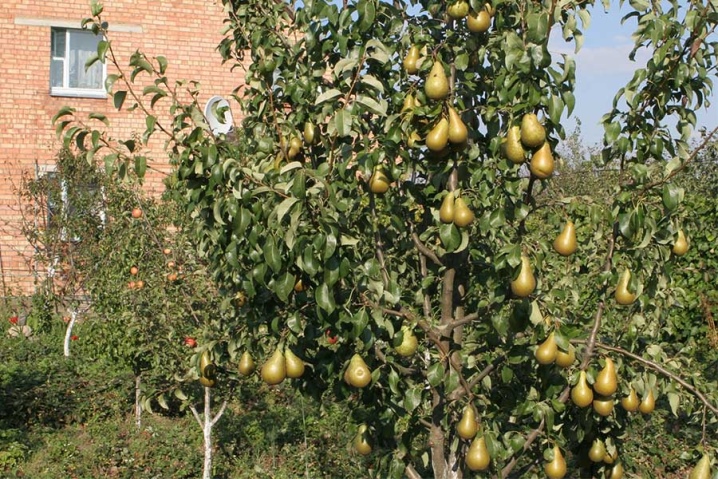
The habitat of this fruit tree is quite extensive. It is successfully grown both in the southern regions and in the middle lane, obtaining excellent juicy fruits with proper care. But even in colder regions, for example, in Siberia and the Far East, a pear grows well, blooms and bears fruit, you just need to pay special attention to its protection in winter.
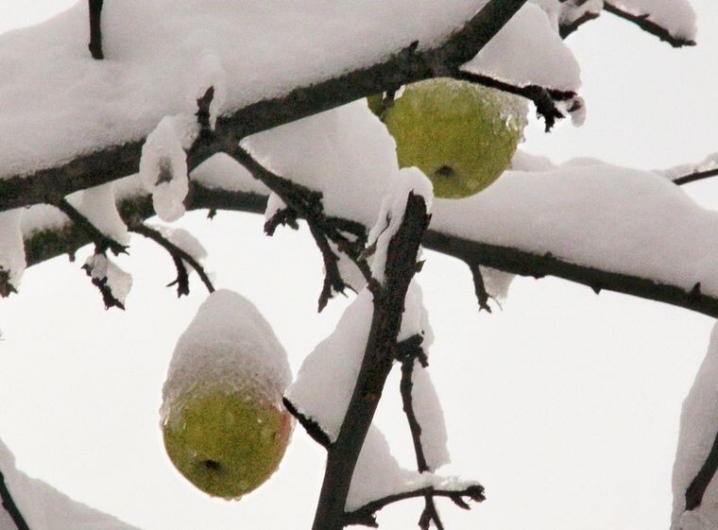
In general, the plant feels equally well both in the Krasnodar Territory and the Moscow Region, as well as in the Urals and in the Primorsky Territory. The main thing is to choose the right variety for a particular region.
If you go a little deeper into the botanical description, then you can note some features:
- the pear belongs to the Pink family, which has about 60 varieties of trees and shrubs;
- the leaves are dark green in color and oval or rounded, slightly pointed at the ends, the petioles of the leaf plates are long, the leaf arrangement is a spiral;
- the tree has an umbrella-shaped type of inflorescence, in which there are from 6 to 12 white, pink or white-pink flowers, the pear begins to bloom in May and pleases with its delicate flowers for about two weeks;
- fruits of trees of different varieties may differ in color, size, but the shape is mostly oblong-rounded, ripening time falls on August-September, depending on the variety and region of growth;
- the root system of a pear is a perennial main and overgrowing roots, while the vertical root goes deep into the soil, horizontal branches are located at a depth of no more than 20 cm, but their spread from the trunk extends up to 3 meters.
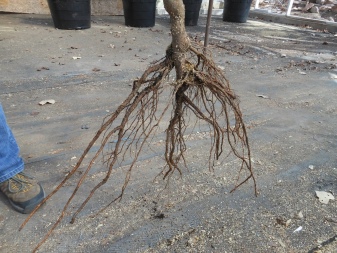

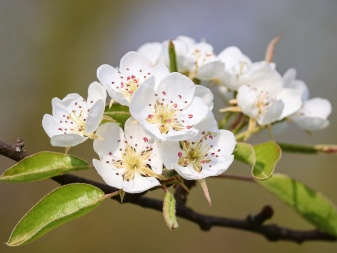
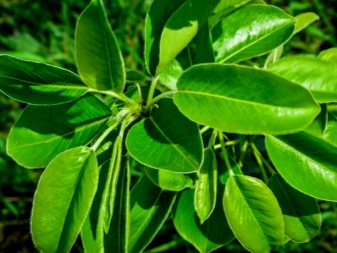
The tree itself lives for 50-60 years, but its fruiting continues for 20 years. The first fruits can be removed from the pear for 3-5 years of the tree's life. Many summer residents choose this fruit tree for growing on their plots because of the delicious juicy fruits, which are good both fresh and in the processed version in the form of jam, compotes, jams.
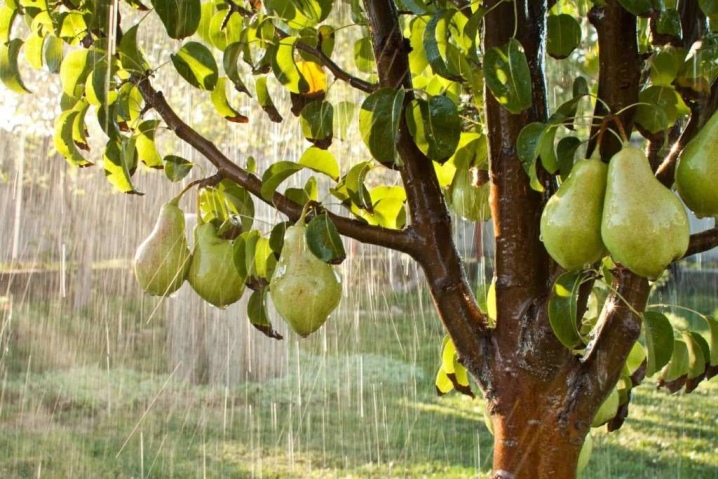
Popular varieties
Despite the fact that there are a variety of varieties of garden pears that have their own characteristics, as evidenced by their description, breeders do not stop their work. Each new variety can have significant differences from its predecessors, even if the outside of the tree looks exactly the same. Experts are working to ensure that varieties with different characteristics appear that would satisfy many gardeners.
For example, they were especially frost-resistant, with strong immunity, less susceptible to diseases, giving a more impressive harvest.
There are a lot of varieties, we will consider only a few.
- Lada. The variety is resistant to both winter cold and drought, it resists fungal diseases well. The pears are yellow in color, with a slight red tint in places, reaching a weight of 150 grams. The fruits are distinguished by a sweet and sour taste and dense pulp. Refers to early summer varieties. The fruits are poorly stored.
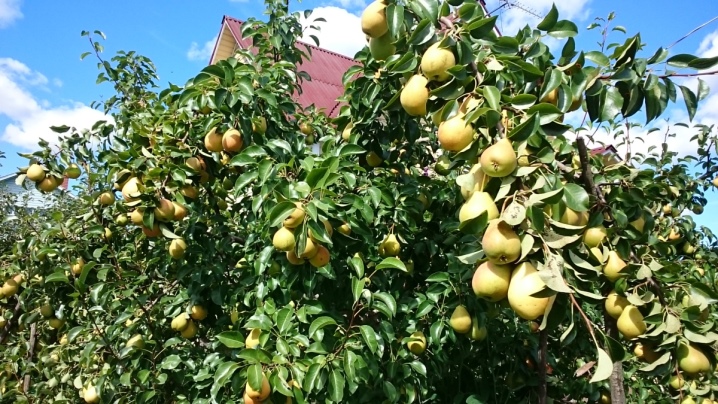
- Cathedral. A pear with a sour taste, greenish tint, has a glossy surface, weight does not exceed 100 grams. Fruits lend themselves well to transportation and storage, the variety is medium-year.
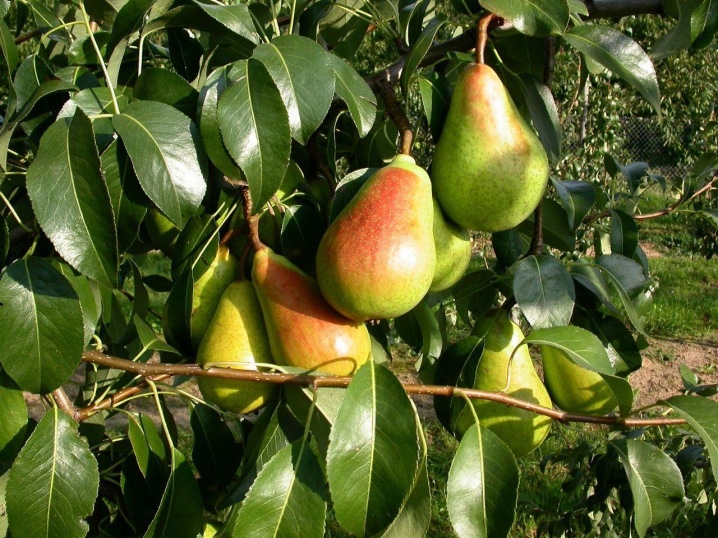
- Chizhovskaya. This variety is not afraid of long-term frosts and fungal diseases. Fruits are yellow-green in color with the presence of a blush. The pulp is white and friable, the taste is sweet and sour.
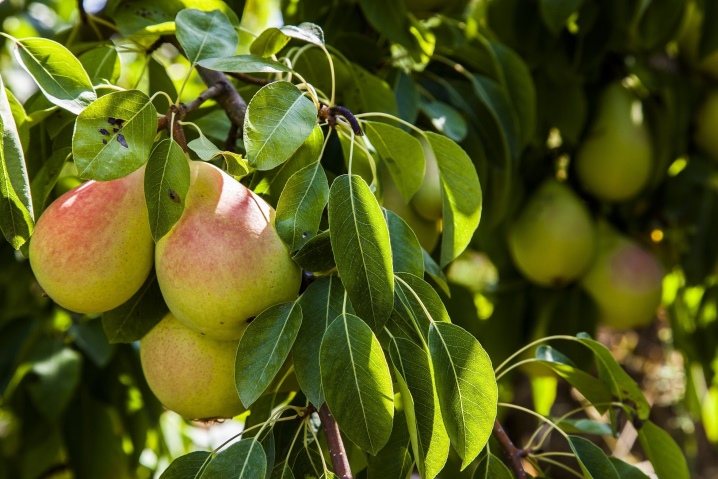
- Muscovite. Refers to early autumn varieties. The fruit is light yellow in color with green inclusions. Prized for its juicy, aromatic pulp.
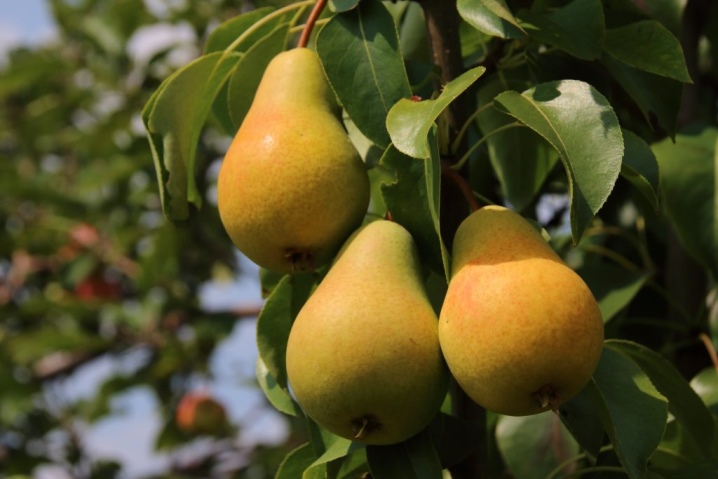
- Fabulous. The variety is represented by tall trees, which give rather large fruits weighing 250 grams. Pears are yellow-green, juicy, it is preferable to eat them quickly or to process them, since these fruits are not intended for long-term storage.
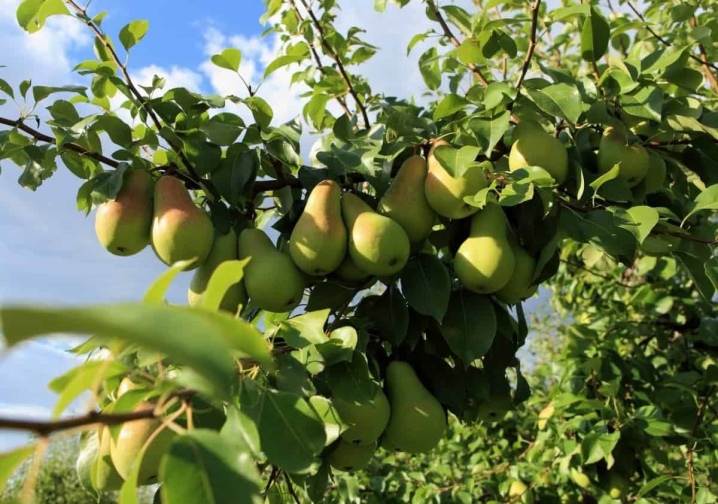
- Pervomaisky. A winter variety, the fruits of which ripen only by mid-October and, under the right storage conditions, do not lose their taste and attractive appearance for several months. Pears are harvested green, but they turn yellow during storage.
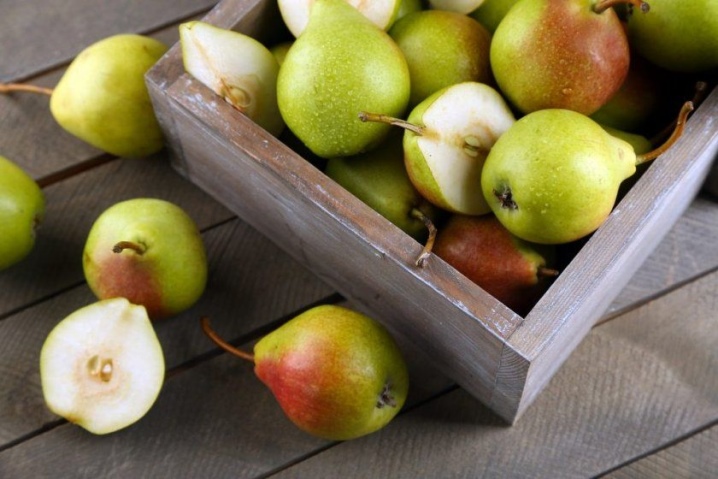
Landing
Planting pears, like many trees, is carried out both in spring and autumn. The choice is made by the gardener himself, taking into account his personal preferences, and maybe circumstances. But most are inclined to believe that it is more correct and better for a tree if it is planted in the fall.
The site is chosen on the west, south or southwest side. The place should be sunny, but it is worth considering that the pear does not like heat. Ideally, the soil is chosen black earth, gray forest soil with loam is suitable. Sandy or too heavy clay soil - not for a pear.
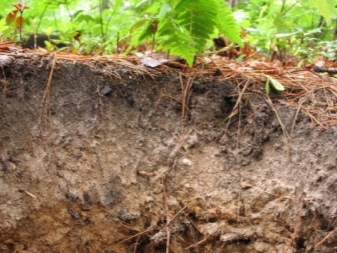

It is good if the landing site is a small hill, the slope will do.
Practice shows that pears planted in the fall take root much better, they have a stronger immunity to various diseases and pests. But the autumn planting also has disadvantages, especially in regions with a cold climate. A young seedling can be damaged if it is not properly covered and protected from rodents, which like to feed on the bark of trees in winter.
The pit is prepared in advance, at least two weeks before planting. The seedling should be immersed in water for several hours so that the roots are saturated with moisture and become elastic. When buying, you should carefully examine the roots. If even slightly rotten or, conversely, dry tips are noticed, it is better to refuse such a seedling.


Compost, rotted manure, superphosphate are added to the soil, which was taken out of the pit, and all this is mixed. Then part of the earth is poured into the pit, forming a mound. A seedling is placed on it, and the roots are carefully spread on different sides of the mound, then the soil is poured, lightly tamped. Then the rest is poured, not forgetting that in no case should the root collar be covered, it should be above the ground at a height of 3-4 cm.
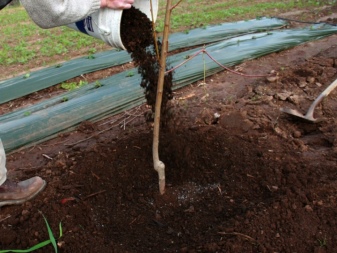
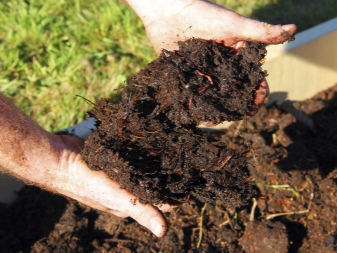
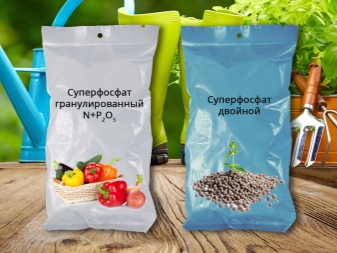
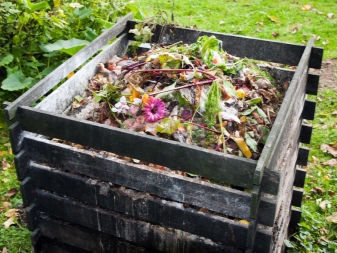
Then the ground is well trampled, the seedling is watered using 2-3 buckets of water, after which the near-trunk circle is mulched with sawdust. You need to drive a strong peg into the ground and tie a seedling to it. Spring planting will take place according to exactly the same algorithm, with the only difference that the pit has been prepared since the fall.
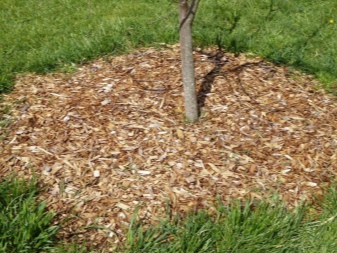
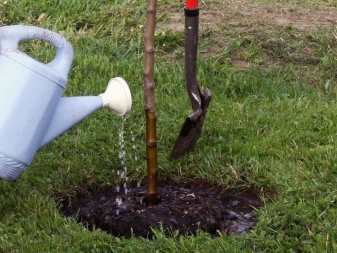
The nuances of care
To grow a healthy, beautiful and fruitful tree, you need to properly care for it. Growing implies that the grooming will be done regularly and not on an ad hoc basis.
Top dressing
After winter, the covering material is removed from the pear, if it is a cold region and the tree is young, then loosening is performed and after that fertilization is applied. In the spring, the pear must be fed with nitrogen fertilizers, choosing any convenient option: bury the granules in the moist soil of the trunk circle or dilute with water and water.
What exactly should be done with the fertilizer will be written on the package. This algorithm should be followed. The first feeding is done before the start of sap flow.
The second dressing is done after flowering to improve the quality of the fruit. At this time, organic matter or nitroammophos is introduced. In June, the pear again needs nitrogen, but already in the form of foliar feeding, you need to dilute the fertilizer and spray the tree. This procedure can be repeated after two weeks.
In July, the tree needs fertilizing in the form of potassium and phosphorus, but the soil is already fertilized in the near-trunk circle. In autumn, the tree cannot be fed, you can mix potassium chloride superphosphate (one and two tablespoons), for young trees it will be useful to treat the tree trunk circle with ash while digging the soil.
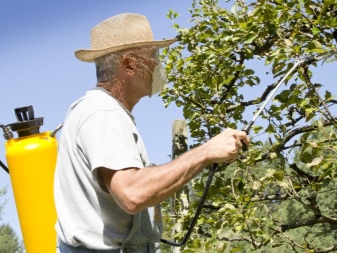
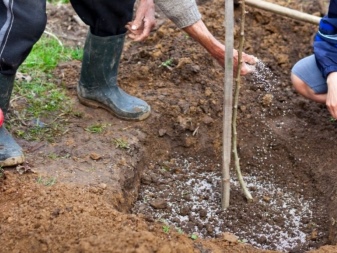
Pruning
It is recommended to prune in the spring, when sap flow has not yet begun. In this case, the air temperature must be at least 5 degrees with a minus sign. Cut off old frozen and dry branches, in addition, remove those that grow inward. The pear tends to thicken the crown, and this interferes with the ripening of the fruit. Therefore, pruning is often done in summer as well.
Sanitary pruning is also carried out in the fall. But at the same time, it is worth considering the peculiarities of the region, you need not only to have time to do this before frost, but also to give the tree time to recover. All sections are treated with garden pitch.
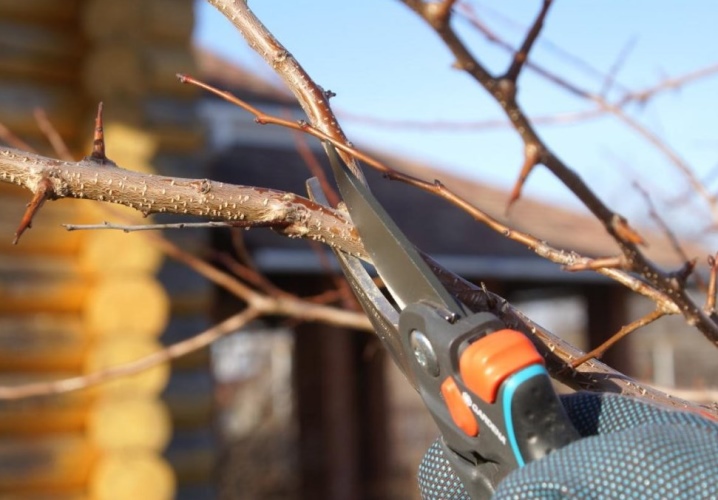
Wintering
Preparation for winter consists in several important procedures:
- dug up the near-trunk circles;
- trees are watered abundantly;
- the ground under the trees is mulched with sawdust.
And then everything will depend on the age of the tree. Young seedlings are covered with spruce branches below, the branches are neatly tied, the seedling is wrapped in burlap. An adult tree does not need such a shelter, but the trunks should be protected from rodents by wrapping material treated with a deterrent, which can be purchased at any garden store.

And then you just need to throw snow to the tree when it falls.
Reproduction methods
You can propagate a pear in different ways. But there are methods that are very lengthy and do not always lead to success. Therefore, many summer residents choose those options that seem more optimal.
- When choosing propagation using layering a box with fertile soil is placed under the tree, cuts are made on the lower branch, lowered into the box, secured with a hairpin and sprinkled lightly with earth. To accelerate the formation of roots, the branch is watered with Kornevin. The formation process is quite long. In autumn, you should not separate the layers from the tree, they insulate it well, then sprinkle the box with snow. And already in the spring, with the onset of heat, you can separate the layers and transplant to another place.

- If the seed method is chosen, then they are placed in the ground in the fall. Peat, sawdust, sand are poured into boxes with seeds, the mixture is constantly moistened and kept in a cool room. As soon as sprouts appear, the temperature is further reduced. This is how the seeds overwinter. And in the spring they can be planted in the ground, where they will grow throughout the summer.

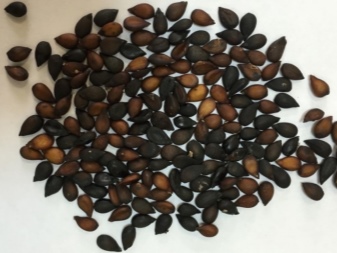
- If you decide to harvest cuttings, you need to think about it even in winter. To do this, find a mature branch, break it in several places. Places of breaks are wrapped with a plaster. This is done so that connective substances for growth are concentrated in these places during the winter. In the spring, the branch will be divided into cuttings, the plaster is removed and placed in a container of water. In about a month, root formation will begin.
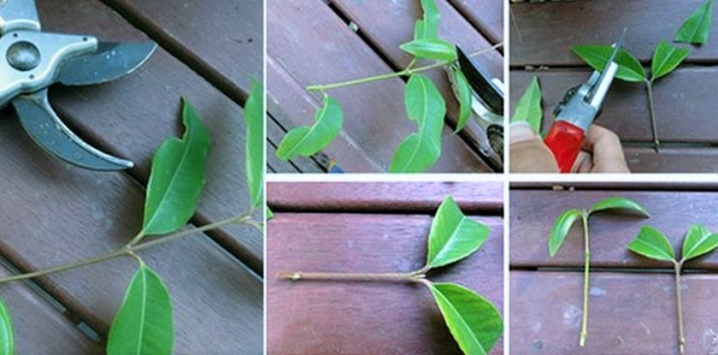
When their length reaches 5 cm, cuttings can be planted in open ground, and then care for them: water, feed, protect from pests, loosen the soil and remove weeds.
Diseases and pests
Disease and pest control is often very tedious and not always successful, so it makes much more sense to prevent all of these problems. To do this, trees in early spring need to be sprayed with Bordeaux liquid. Such treatment is able to protect trees from many diseases, for example, from scab, powdery mildew, fruit rot. You can also treat trees with "Zircon" or "Ecoberin".
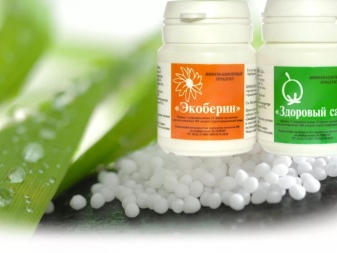
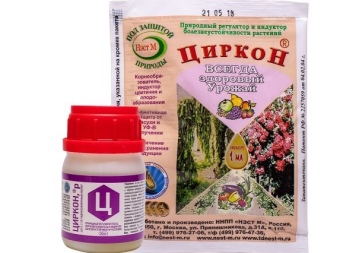
Trees need to be constantly inspected in order to detect problems in time and immediately start a fight. There are a large number of tools, but at the same time the gardener chooses for himself which drugs to use. Increasingly, the opinion of summer residents agrees on one thing, that Bordeaux liquid is the best for a number of diseases.
But if the tree is already affected, they act like this: all diseased shoots and leaves are cut off and burned. Places of cuts are treated with copper sulfate, allowed to dry, then covered with garden var. After that, the tree is well sprayed with Bordeaux liquid, diluted according to the instructions indicated on the package, since there are different options: in powder form, in concentrated liquid form. In addition, you also need to water the soil in the trunk circle.
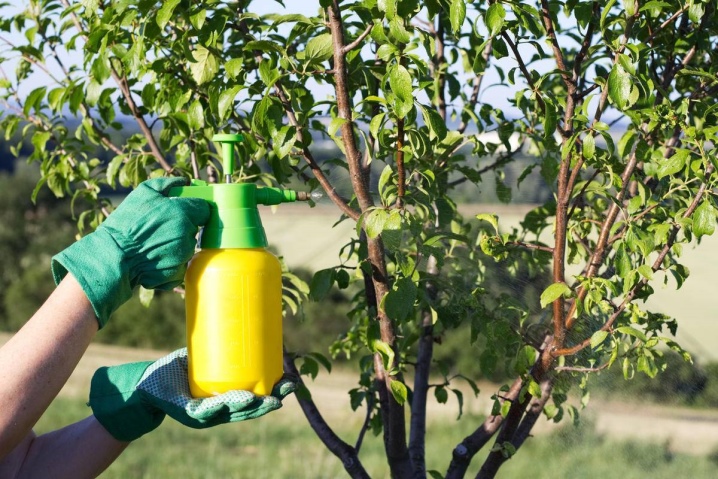
This treatment is repeated a week later.
Provided that the tree is sick, and the fruits are already ripening on it, it is worth using safe means, such as "Fitosporin", it helps to safely fight a number of fungal diseases.
As for pests, preventive measures can also help here, and here you can use folk methods. For example, dilute tar soap in water, add ash and spray the trees. Any other soap is suitable for such a mixture. The same solution is great for dealing with aphids and various mites. In addition, in stores you can buy a variety of products, and it is always indicated which specific parasites they will help to get rid of: "From aphids", "From spider mites", etc. "Green soap" helps very well to cope with pests. It is sold in convenient spray bottles, you do not need to dilute anything, but you can start working right away.
And again, it is worth remembering that all chemical treatments are good when there is still no fruit on the tree. If they are already ripe, you should turn to folk methods, use an ash solution, soap, ammonia.
So that insects have no chance to start in the bark of trees and winter there, all leaves must be removed and burned in the fall, and before winter, the trunk circle and branches must be treated with Bordeaux liquid or copper sulfate.
Besides, Proper care helps to avoid the appearance of pests and diseases. This includes the correct watering regime, and loosening, and timely feeding, and correct pruning. Only an integrated approach will allow you to grow a healthy pear and collect a good harvest every year.
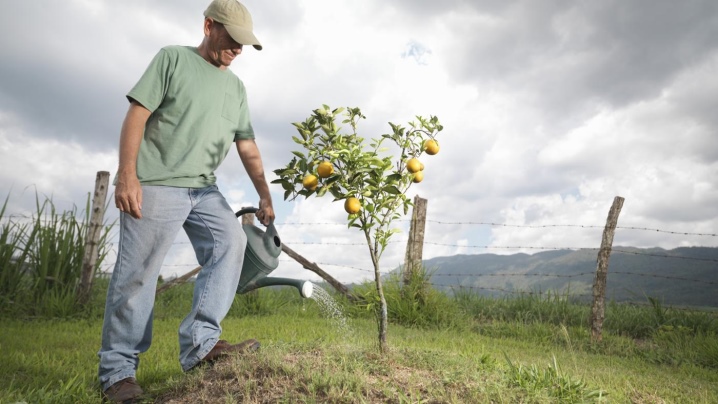












The comment was sent successfully.